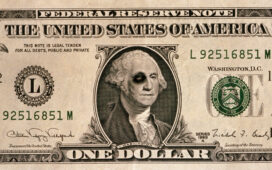By Isabel Wang
The BOJ pulls trigger on historic rate hike. Here’s how some investors are playing it.
Hello! This is MarketWatch reporter Isabel Wang bringing you this week’s ETF Wrap. In this week’s edition, we look at one of the currency-hedged Japan ETFs, which reached its all-time high on Thursday as the yen weakened after the Bank of Japan’s historic interest-rate shift.
Please send tips or feedback to [email protected] or to [email protected]. You can also follow me on X at @Isabelxwang and Christine at @CIdzelis.
Sign up here for our weekly ETF Wrap.
Investors piled into a currency-hedged Japan ETF for protection on Thursday as the Japanese yen was sinking, following a historic BOJ policy shift to vanquish a longstanding policy of negative interest rates.
While U.S. investors still appeared to be bullish on Japanese stocks, some investors were looking for ways to seize on the rally in one of the world’s hottest markets, while stripping out the currency exposure to a foreign economy.
The WisdomTree Japan Hedged Equity Fund DXJ rose for five straight sessions to end at the highest level since its 2006 inception on Thursday afternoon. The fund, with around $5 billion assets under management, has advanced over 24% so far in 2024, outperforming the 22% advance for the benchmark Nikkei 225 index JP:NIK over the same period, according to Dow Jones Market Data.
DXJ this year has also outpaced it more abundant and unhedged Japan-related ETF peers. The iShares MSCI Japan ETF EWJ and the Franklin FTSE Japan ETF FLJP were 12% and 11.4% higher year-to-date, respectively, according to FactSet data.
“This fund is giving you a currency hedge overlay on top of your Japanese equity exposure, which is very valuable when the yen is weakening,” said Aniket Ullal, head of ETF data and analytics at CFRA Research.
Normally, DXJ would outperform EWJ during periods when the Japanese yen weakens against the U.S. dollar DXY, and it would lag its unhedged counterparts when the yen strengthens against the greenback, Ullal told MarketWatch on Thursday.
See: ‘Mr. Yen’ says authorities may soon intervene as Japanese currency eyes multi-decade lows
However, downward pressure on the yen seems to be persisting even after the Bank of Japan on Tuesday announced an exit from its ultra-accommodative monetary policy era by raising policy rates for the first time in 17 years. The Japanese currency weakened to 151.25 against the U.S. dollar on Wednesday afternoon, its lowest level since November 2023, according to 5 p.m. New York rate compiled by Dow Jones Market Data.
While Japan’s era of negative rates might be over, it still has been keeping its policy rate around zero, the lowest among major central banks around the world. On Wednesday, the Fed kept its benchmark interest rate unchanged in a range of 5.25% to 5.5%, while on Thursday the Bank of England also maintained rates at a 16-year high of 5.25%. The Swiss National Bank made a quarter-point reduction in rates that took markets by surprise.
“Traders saw through the smoke [after the Bank of Japan’s policy shift] and saw that this is still a very dovish central bank [decision],” said Jeffrey Roach, chief economist at LPL Financial.
Roach said that it’s possible that Japan will continue to grow “a little bit below the trend” with “some inherent weakness” in its economy, even though it was poised to grow after coming out of recession in 2023. There’s still a need for policy makers to remain accommodative in their monetary policy this year, Roach told MarketWatch.
See: ETF investors are following Warren Buffett and betting big on Japan. But here are key risks to consider.
Many U.S. investors had been underweight Japan since the late-1980s when the country’s asset bubbles burst, with equities and property values plunging as a result of the Bank of Japan’s tightening of monetary policy. Japan’s economy stagnated for decades, as low inflation and lower consumer demand made the economy less attractive to foreign investors.
However, fresh optimism about the country’s corporate governance reforms, signs that inflation and wages are finally on the rise and disappointment on China’s economic recovery began bringing foreign investors back to the Japanese market in mid-2023. Investors also hope that the Fed will soon begin cutting interest rates, which could shrink the rate gap between the two central banks, pressuring the dollar and further supporting the yen.
“For economies like Japan that are so dependent on the global economy, you will see inherent choppiness that you wouldn’t necessarily expect to see in the U.S., and that’s one of the reasons why there will be more fragility in [the Japanese currency] market,” Roach said.
See: Negative-interest-rate era is over. Was it the ‘dumbest idea’ in economic history?
As usual, here’s your look at the top- and bottom-performing ETFs over the past week through Wednesday, according to FactSet data.
The good…
Top performers % Performance AdvisorShares Pure US Cannabis ETF 16.5 Sprott Uranium Miners ETF 7.4 YieldMax TSLA Option Income Strategy ETF 5.9 WisdomTree Japan Hedged Equity Fund 5.6 Global X Uranium ETF 4.6 Source: FactSet data through Wednesday, March 20. Start date March 14. Excludes ETNs and leveraged products. Includes NYSE, Nasdaq and Cboe-traded ETFs of $500 million or greater.
… and the bad
Bottom performers % Performance ProShares Bitcoin Strategy ETF -5.2 ARK 21Shares Bitcoin ETF -5.0 Fidelity Wise Origin Bitcoin Fund -5.0 Bitwise Bitcoin ETF Trust -5.0 iShares Bitcoin Trust Registered -5.0 Source: FactSet
New ETFs
Exchange Traded Concepts Thursday announced the launch of the the actively-managed Bancreek International Large Cap ETF BCIL, which invests in securities of large capitalization issuers outside of the United States. ProShares Wednesday launched the ProShares Nasdaq-100 High Income ETF IQQQ. The fund is powered by a daily call options strategy, offering investors both the potential for high income and a long-term total return approximating that of the Nasdaq 100 index NDX.Hartford Funds Tuesday announced the launch of the Hartford Multifactor International Small Company ETF ROIS, which is designed to gain exposure to the small-cap international equity market while seeking to reduce market volatility through the application of key systematic factors, the firm said in a press release.
Weekly ETF Reads
Bank ETFs extend big rally spurred by Fed as U.S. stock market rises to new peaks (MarketWatch)BlackRock launches U.S. equity ETFs with covered-call strategies as option-based funds surge (MarketWatch) Here’s the reality about the mutual funds and ETFs that beat the stock market in 2023 (MarketWatch)Ether spot ETFs: SEC’s Gensler has a legal trick up his sleeve to keep them off the market (MarketWatch)Where to Invest $100,000 Right Now (Bloomberg) State Street Boosts Platforms, Extends Staff Shifts to Prep for Settlement Rule Change (Bloomberg)
-Isabel Wang
This content was created by MarketWatch, which is operated by Dow Jones & Co. MarketWatch is published independently from Dow Jones Newswires and The Wall Street Journal.
(END) Dow Jones Newswires
03-21-24 1822ET
Copyright (c) 2024 Dow Jones & Company, Inc.





